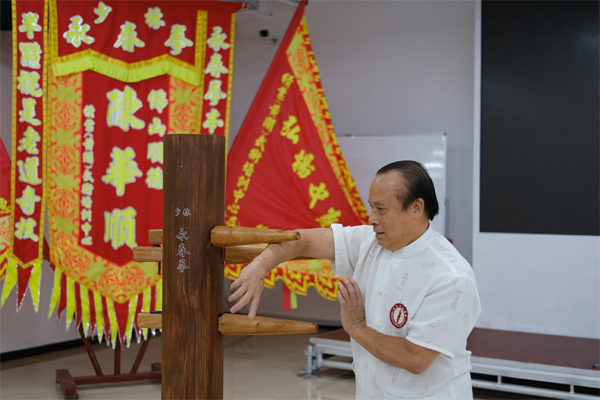Ancient art that packs a punch

Chen Jiye has been practicing wing chun for 60 years. [Photo provided to China Daily]
Chen Jiye, 73, teaches the martial art wing chun on an average of two hours a weekday and five hours on weekend day and says he feels no tiredness.
He has been practicing this martial art for 60 years. Wing chun, which originated in the Qing Dynasty (1644-1911) in South China, has become popular worldwide through action films about its renowned masters Ip Man and Bruce Lee.
Chen Jiye's master Chen Jiaxin was the third-generation successor of wing chun in Shunde, Guangdong province, who was also a peer of Bruce Lee.
In 2013 wing chun was listed in China sport's intangible cultural heritage issued by the General Administration of Sport of China.
Chen, who started teaching the art four years ago, is now keen on teaching it to more people.
He liked to read martial art fantasy when he was a child, he says, and took great pleasure in imagining how the moves were carried out.
"I heard about Chen Jiaxin in our village being able to do wing chun, and I went to ask him to teach me and he agreed."
That was when he was 13, a time when few people were learning it, he says, and Chen's enthusiasm ensured that he was a very quick learner.
His master taught him very thoroughly with strict attention to detail, he says, and from then on each day Chen would practice the basic skills including the horse riding stance and the punch.
"It's quite hard to practice the basic skills. You have to punch 1,000 or 2,000 times a day, and each punch must be done precisely otherwise it will fall short of what you want it to do."
Wing chun is renowned for its quick arm movements that help its practitioners' maintain the suppleness and flexibility of their muscles.



 Print
Print Mail
Mail

